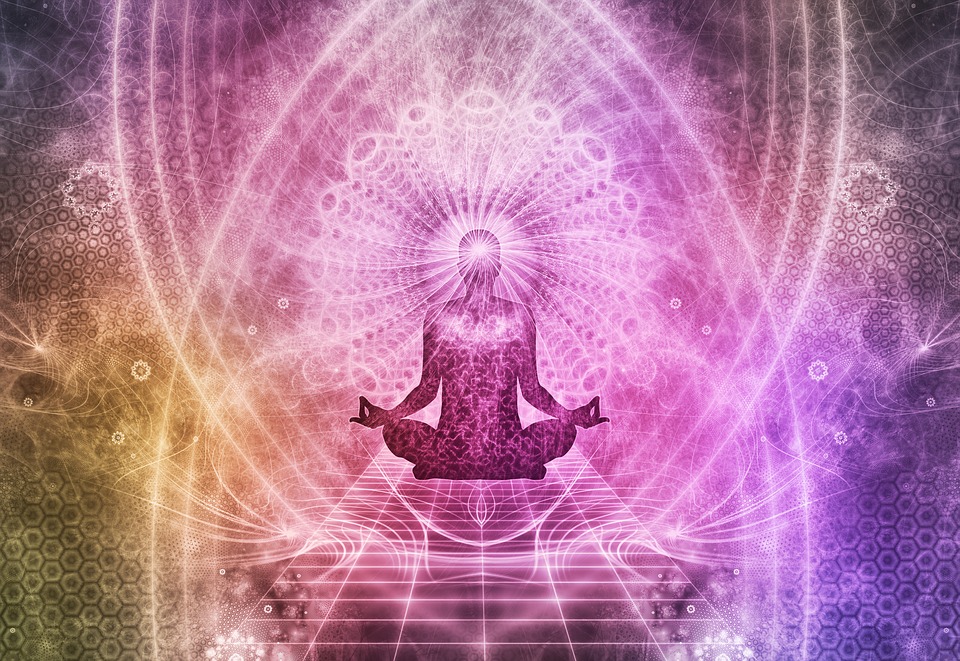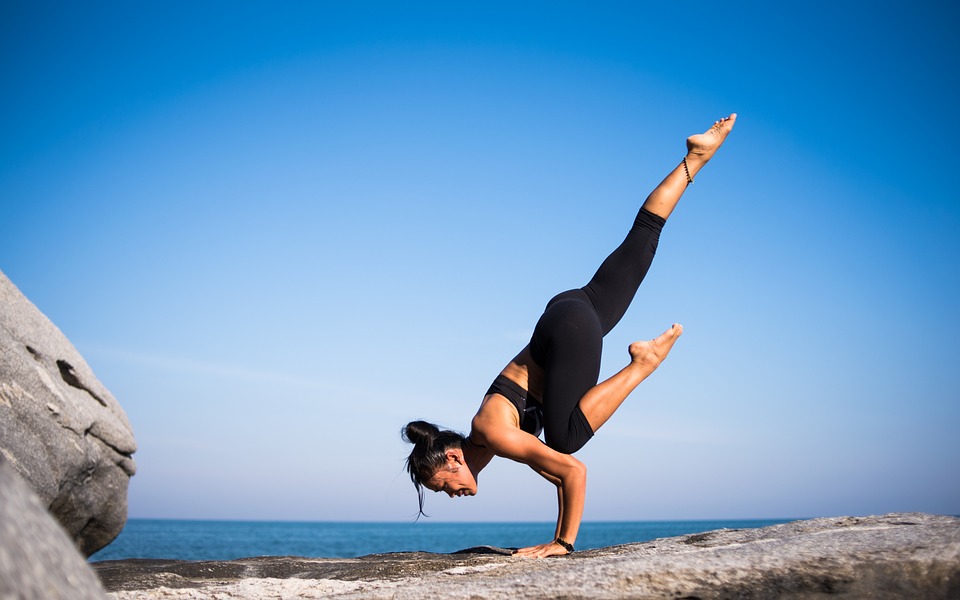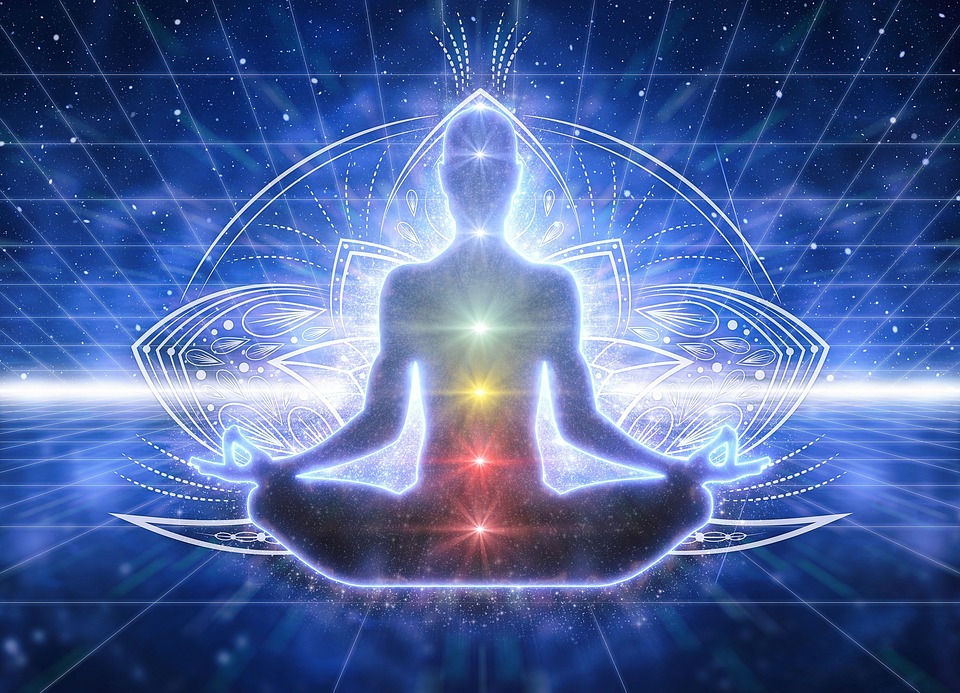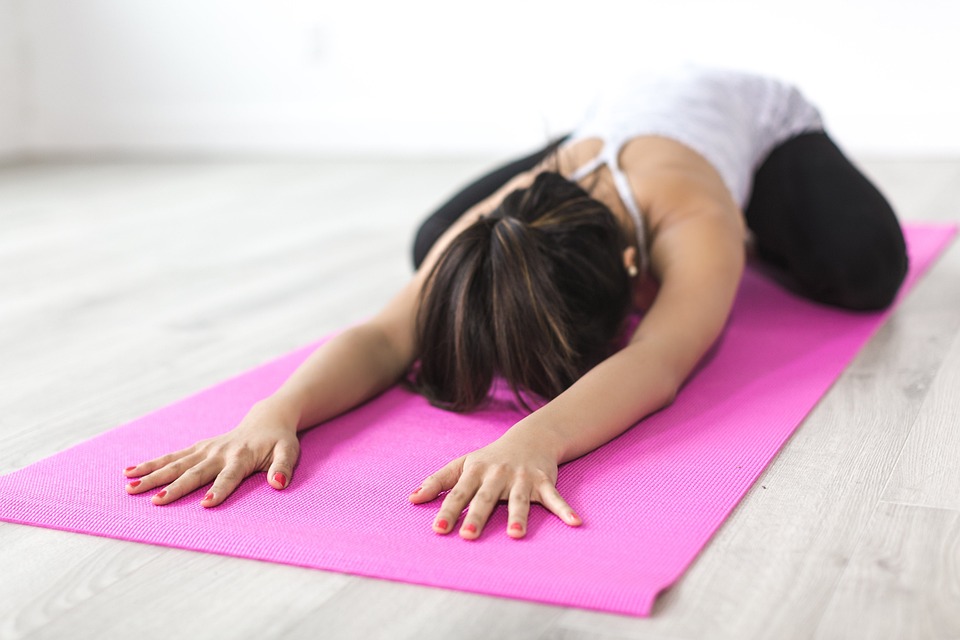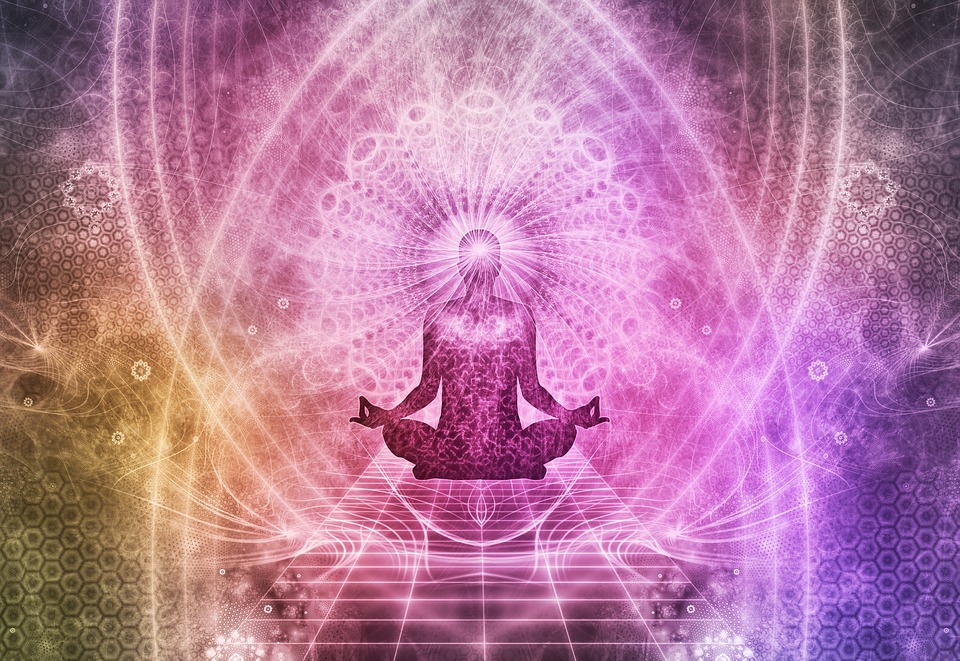
The chakras are points of focus in the energy body. According to yoga practice, there is a distinct spiritual entity, known as the subtle body, in addition to the physical body that is visible to us in everyday life. This subtle body is one of the three forms of body that exists beyond our gross physical body.
The tangible and psychological power that can be felt throughout our body is the visible effect of a less obvious type of energy. When we experience low energy, it could be a sign that there is a disruption in the energy flow in the chakras. This blockage can be the result of emotional, mental, or physical triggers.
What is Chakra Yoga?
Yoga and pranayama breathing exercises are a way in which we can make contact with our subtle bodies. Yoga that concentrates on aligning the seven chakras to promote harmony is referred to as chakra yoga. By means of it, a practitioner is able to direct the intangible breath (Prana) to specific power points (chakras) to experience extraordinary capacities, eternity, or liberation.
Chakra yoga involves the practice of controlling the energy of Prana in chakras with the application of specialized stances, breathing exercises, mudra forms, and meditation exercises. We aim to cleanse and even out either all the Nadis and Chakras or just the ones that got obstructed for some purpose by controlling the movement of Prana.
Chakra yoga can be used to tackle issues like psychological concerns, an unhealthy lifestyle, and other personal matters. This method helps to activate the chakras and open them up, unclogging these energy centers. When you maintain a harmonious energy flow throughout your chakras, you can easily access your powers and also commune with the divine.
Yoga Poses for Chakra Balancing
Yoga poses that are utilized for chakra balancing involve components that are both physical and spiritual, allowing for a unification of all seven energy centers. Additionally, yoga can bring about a harmonious equilibrium of body, soul, and intellect as it is an alternate method of physical activity.
Engaging in chakra yoga can give more mindfulness, calmness, and tranquility by decreasing stress and helping to achieve inner serenity. It also increases your energy and intuitive abilities. Yoga is an excellent way to help with your posture, suppleness, immunization, weight reduction, and general health.
You can incorporate a number of postures into your yoga regimen in order to counter any form of chakra unbalances. Pay attention to postures that target the physical organs connecting with a particular chakra. To illustrate, the basic energy center can be associated with lower body parts, which means one can do yoga postures that involve stretching the legs and developing a sensation of being centered in the body.
7 Best “Chakra Yoga” Poses
Exploring the chakra system in yoga practice can help sharpen the inner you, according to Amanda Huggins, a coach dedicated to anxiety and conscious habits. Doing so can strengthen your intuition and bring more assurance.
The experts have given opinions on the best poses to support each chakra. You don’t have to do every single pose. You are able to pick and choose the chakra you desire to focus on. Incorporating just one or two postures into your daily routine can be a huge help If you do not have much time, do not worry! Doing one or two poses each day can be very beneficial. It would be desirable to partake in at least five minutes of physical activity, according to Diane Malaspina, Ph.D., an applied psychologist and yoga teacher. For maximum advantages, she even suggests performing chakra-focused yoga four days of a week.
1. Yoga Posture to Open the Root Chakra: Forward Bend
Root Chakra
The first chakra of the energy system is found at the bottom of the back. Being connected to the earth as well as the color red are characteristics of it. The root chakra is the origin of balance, safety, vigor, and fundamental survival instincts.
Signs of a troubled root chakra may be expressed as insecurity, obsession with material possessions, lack of motivation, anxiousness, feeling overwhelmed, digestive issues, and a general feeling of unease.
Having balance within your base energy center allows you to stay grounded in the here and now, connected to the Earth, and have greater mental well-being, greater confidence, and increased strength of character. It can allow you to feel more drive and excitement, and a greater potential for personal growth and development.
Do a Forward Bend standing up to make sure your root chakra is properly arranged; this chakra can be found at the bottom of the spine. Begin the exercise by positioning your feet shoulder-width apart with the toes pointed straight ahead and the arms at the sides. Rather than rounding your back, hinge at your hips. Bend your knees if necessary and lean your upper body over your legs. Rest your hands either on the yoga mat or on yoga blocks if that position is more comfortable. Take a few deep breaths while maintaining the pose and then delicately stand up again.
Huggins emphasizes that with Standing Forward Bend, “there is a vast amount of opportunity for tuning in”. Starting with it brings about the feeling of having your feet firmly planted on the ground. As you begin to fold, a sensation of being rooted on the spot shifts to encompass a larger area.
2. Yoga Posture to Open the Sacral Chakra: Warrior
Sacral Chakra
This region has its roots in Sanskrit, and it is connected to the element of water and the color orange. The chakra situated beneath the belly button is responsible for creative expression, emotions, sex appeal, coziness, ardor, and amusement.
Possible indicators of an unaligned sacral chakra might be eating disorders, low confidence, cravings and addictions, reduced libido, reliance on others, hindered artistic expression, bladder difficulty, and psychological fragility. Having all of the chakras balanced out can give you a sense of enthusiasm, warmth, and cheerfulness, as well as improve your self-esteem, satisfaction, and care.
To activate your sacral chakra, situated in your lower abdomen, practice Warrior I pose. Move your right foot forward and bend your knee at a 90-degree angle. Keeping your left leg straight, stay in this position. As you raise your arms, take in a deep breath, making sure to keep your hips level with the floor. Exhale, feeling your sacral area opening. Bring your arms down and stand up to finish the pose. Repeat on your other side.
It can be beneficial to perform poses that extend the hips, such as Warrior I, Warrior II, or Peaceful Warrior, Malaspina explains, as they stimulate the sacral chakra.
Huggins recommends trying Goddess Pose to target the sacral chakra and that, when performing this pose, one should focus on engaging the lower abdominal area and be mindful of the area where we keep emotions.
3. Yoga Postures to Open the Solar Plexus Chakra: Twists
Solar Plexus Chakra
In Sanskrit, this energy center is referred to by the name Manipura. It is situated near the navel and the stomach. The association with fire and the hue of yellow is often attributed to it. Our transformation and sense of personal power, accountability, and assurance come from the solar plexus chakra.
If the balance is off, things such as perfectionism, a poor self-image, a lack of trust, compulsiveness, irresponsibility, and a lack of drive may emerge. Having a sense of balance will allow you to have a clear idea of what you want, make choices without difficulty, rely on your instincts, possess the strength to face difficulties, and feel secure that you can reach your objectives.
The solar plexus chakra is located in the area above the belly button and beneath the rib cage. Target this chakra with a Supine Spinal Twist. Position yourself on your back with your legs bent such that your knees are up near your chest. Rotate at your waist and bring your knees towards your right side while stretching your arms out in a T shape. Alternatively, put one hand on your knee and the other extended out to the side while looking in the direction of your opposite shoulder. Hold for a few breaths. Return to your starting position. Repeat on your other side.
Huggins states that the Solar Plexus is advantageous because it is the first origin of intuition. I come across many individuals who have difficulty being self-assured or don’t have confidence. Consequently, contorting, which holds the capability of freeing held energy and easing the inner organs, can be extremely beneficial.
Other postures that may help to harmonize your power center are Sun Salutations, balancing postures involving your arms, as well as abdominal strengthening exercises.
4. Yoga Postures to Open the Heart Chakra: Backbends, Twists, and Dolphin
Heart Chakra
The fourth energy center in the body is called the Anahata, which is situated in the middle of the chest. Air and green are linked together in some way. This energy center is accountable for feelings that involve unconditional affection, sympathy, tolerance, appreciation, understanding, and connection.
Warning signs of an imbalanced heart chakra can include manipulation, codependency, mistrust, jealousy, lack of empathy, antisocial behavior, keeping oneself isolated, feelings of low self-esteem, and an unhealthy connection between two people. Contrarily, noticing the loveliness in life, having a personal relationship with oneself, kindness, sympathy, liberality, self-recognition, and being able to give out and take in fondness are all indications of a hearty and balanced chakra.
Line up your heart chakra with the Bridge position, an ancestral heart opener. To do this backbend, recline on your back with both knees bent, feet close to your bottom, hands at your sides, and the heels of your feet adjusted to the level that suits you best. Take a deep breath in as you raise your hips, join your hands underneath your lifted torso, and then gradually ease your shoulders below your body. Concentrate on lifting your chest upward, looking towards your heart center. Breathe out as you slowly lower your bottom to the ground.
It can be useful to do poses such as twists, backbends, and dolphins because it allows for more room in the energy center of the heart. Huggins maintains that gentler backbends, such as the Bridge position, permit more accurate, mindful movements.
5. Yoga Posture to Open the Throat Chakra: Fish
Throat Chakra
The Vishuddha is the Sanskrit term for the throat and neck region. Its element is space and the color is blue. The throat area is where one expresses themselves, talks, tells the truth and builds trust.
Among the evidence of a disruption of the fifth energy, wheel are keeping information to oneself, introversion, timidity, prejudice towards oneself, anxious behavior in social situations, lack of faith in one’s skills, hostile speech, apprehension of verbal expression in front of groups, and haughtiness. A healthy throat chakra will allow you to convey your message lucidly, give presentations to large audiences with confidence, articulate your ideas succinctly, and stay emotionally in control.
Lie on your back with your legs extended and close to each other, put your arms underneath your buttocks and keep your hands facing the ground. Take a deep breath in, pushing your forearms against the ground as you lift your body up, forming a sloped shape with your upper back. Rest the top of your head on the mat. Pay attention to the area of your neck, as this contains the throat chakra. Exhale to carefully lower to your starting position.
It can be useful to make certain movements to extend and loosen the neck muscles. An inverted pose such as a Shoulder Stand, Camel, or Bridge can be performed to work on aligning the Throat Chakra.
6. Yoga Posture to Open the Third Eye Chakra: Legs Up the Wall
Third Eye Chakra
The Ajna chakra is located between the eyebrows. Illumination and the shade indigo or regal blue are associated with the chakra. The third chakra is thought to be associated with intuition, wisdom, intellect, sight, clairvoyance, stimulation, and creativity.
Having an irregular Ajna chakra can make one experience a sense of inadequacy, limited outlook, hesitance, distrust, a lack of perception of matters at a larger scale, and anxiety about being judged or having to face transformation. Alternatively, you will gain insight into the interconnectedness of the universe, practice awareness within yourself, grasp the significance of existence, and be more content in commencing a new journey with an attuned third-eye energy center.
The third eye chakra is present in the brain, eyes, ears, and nose, as well as the pineal and pituitary glands. Performing Legs Up the Wall is an exceptional way to harmonize this chakra. Position yourself on the floor with your hips resting against the wall, curling up in a fetal-like posture. Move onto lying on your back with your legs up against the wall and place your arms alongside your body. Take a deep breath, lean into the wall, and be mindful of the area around your eyebrows.
This yoga position offers you a great chance to unwind and concentrate on your inner being. Utilize Supported Forward Folds (placing your head on a block) and Savasana to help bring your third eye chakra into proper alignment.
7. Yoga Posture to Open the Crown Chakra: Easy Pose
Crown Chakra
The Sanskrit word for the ultimate chakra of the energy system is Sahasrara. The highest point on one’s head is connected to the colors violet or white. This energy center is associated with achieving higher consciousness, developing a spiritual link, and becoming aware of the universe as a whole.
When the energy of your crown chakra is out of balance, it can result in feeling greedy, blue, cut off from the spiritual realm, making judgments without thinking, alone, egocentric, assuming privileges, and demonstrating a feeling of victimhood. When your chakra is well-balanced, you will feel an attachment to the divine, and be free of judgment. Additionally, you’ll have a greater understanding of spirituality and will experience true joy and contentment.
The crown chakra is placed in the musculature, skeleton, and surface area of your body. Sukhasana is an excellent option for focusing on your crown chakra. To begin, take a seat with your legs crossed, placing your feet away from your hips, and placing your hands on your knees with either your palms facing up or down. Concentrate on extending your back from your base to the very peak.
This gives you the advantage of concentrating your energy on awakening and stimulating your crown chakra. Attempting headstands or engaging in Savasana may be useful for activating this energy center.

